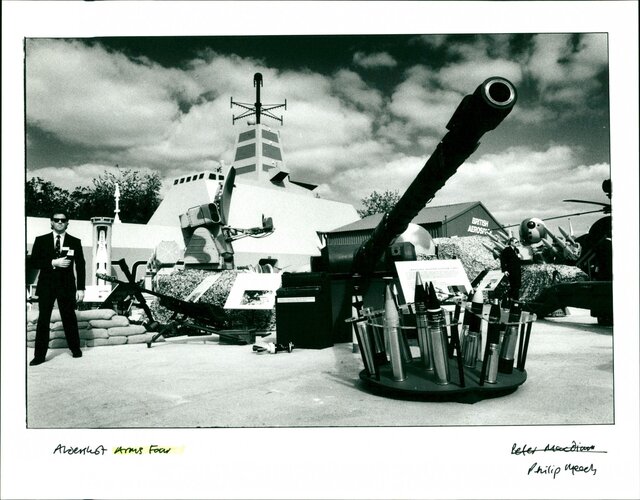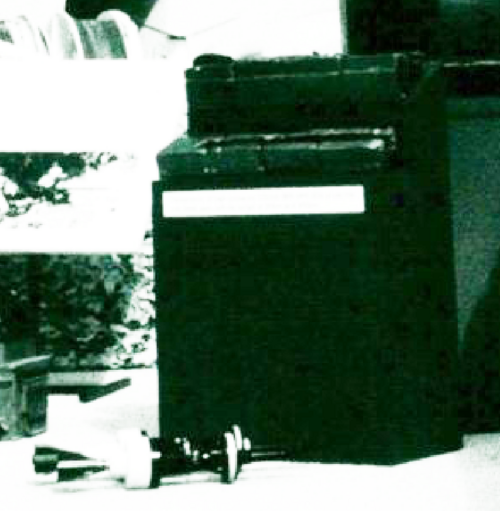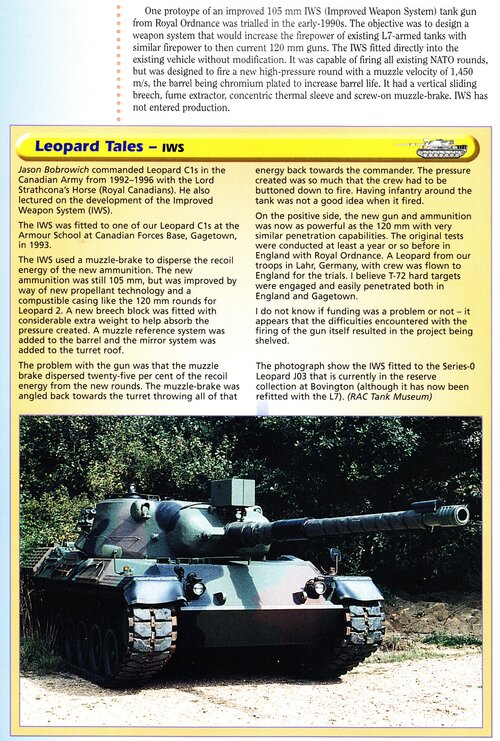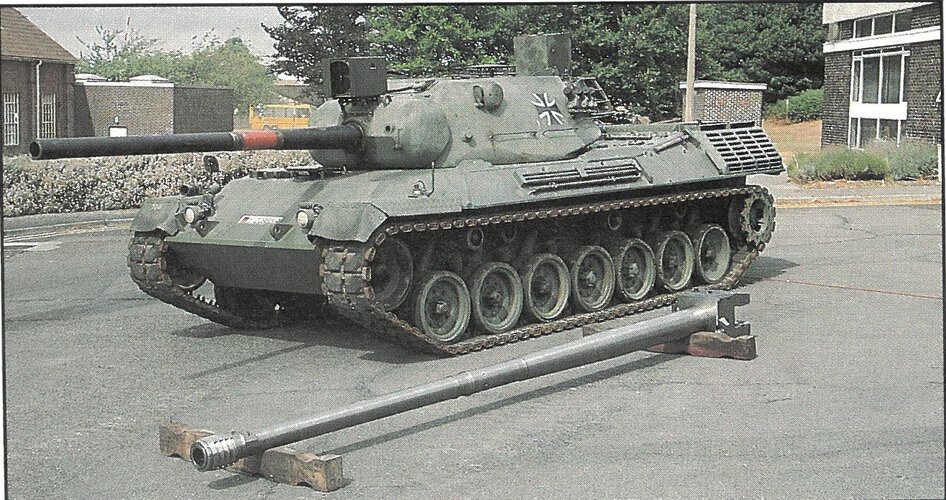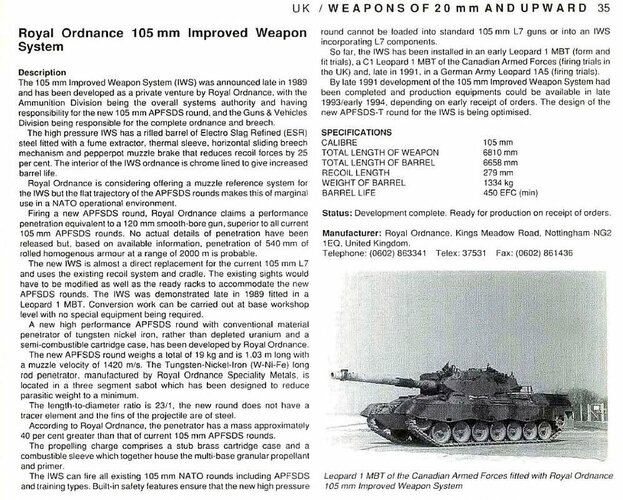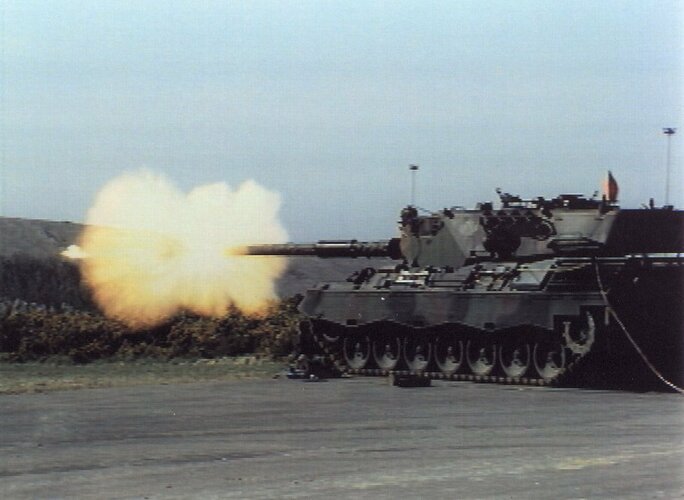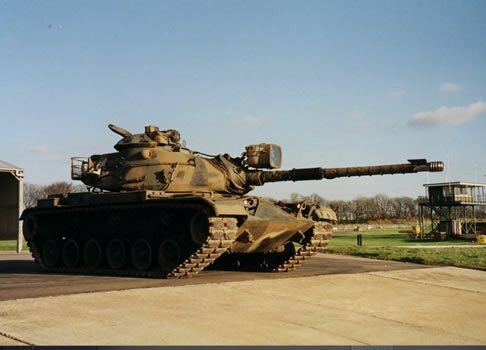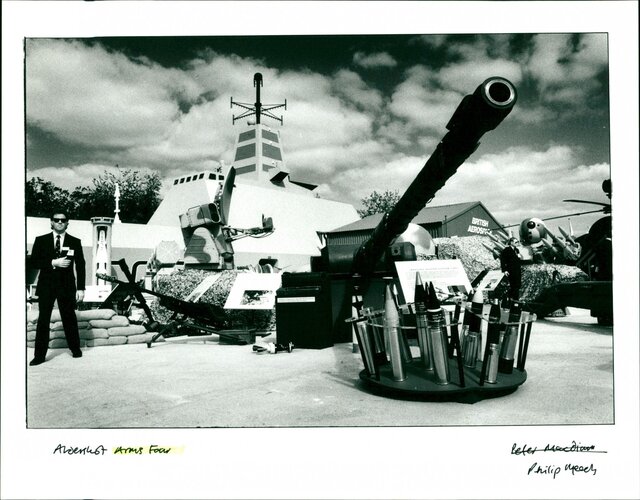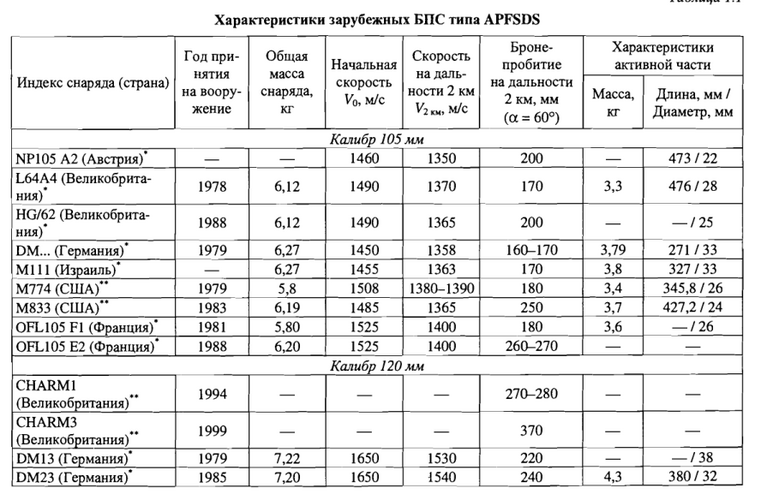ChieftainWarrior
ACCESS: Restricted
- Joined
- 4 December 2020
- Messages
- 5
- Reaction score
- 11
Hi,
I've been looking into the Royal Ordnance 'RO2004' light tank design that was built in the late 80s/early 90s; and am now looking for more information regarding its armament.
The tank was armed with a 105mm L7 derivative, called the Improved Weapon System (IWS).
Supposedly it had:
- A rifled barrel of Electro-Slag Refined (ESR) steel fitted with a fume extractor, thermal sleeve, horizontal sliding breech mechanism and pepperpot muzzle brake that reduces recoil forces by 25 per cent
- The interior of the IWS ordnance is chrome lined to give increased barrel life
- Has an automatic muzzle reference system for the mounted on a forged upstand on the barrel
- New APFSDS round – named the 'T-2 series'

Here's an image of a Leopard 1 mounting the gun. The image and most of the information above are from http://www.army-guide.com/eng/product3633.html.
I would like some better information from more reputable sources, though, specifically on the penetration figures/ammunition details for the T-2 APFSDS.
If anyone has anything, it would be greatly appreciated!
I've been looking into the Royal Ordnance 'RO2004' light tank design that was built in the late 80s/early 90s; and am now looking for more information regarding its armament.
The tank was armed with a 105mm L7 derivative, called the Improved Weapon System (IWS).
Supposedly it had:
- A rifled barrel of Electro-Slag Refined (ESR) steel fitted with a fume extractor, thermal sleeve, horizontal sliding breech mechanism and pepperpot muzzle brake that reduces recoil forces by 25 per cent
- The interior of the IWS ordnance is chrome lined to give increased barrel life
- Has an automatic muzzle reference system for the mounted on a forged upstand on the barrel
- New APFSDS round – named the 'T-2 series'
- Penetrates 540 mm of Rolled Homogeneous Armor at a range of 2,000 meters (unknown angle)
- Weighs 19kg, 1030mm long, 1,420m/s MV
- W-Ni-Fe penetator, 3-segment sabot
- Length-to-diameter ratio is 23:1
- Penetrator mass ~40% greater than 'current 105mm APFSDS' rounds
- '30 to 40% greater than that of current 105 mm APFSDS rounds' (Wikipedia)
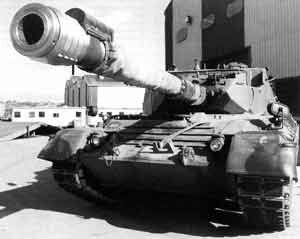
Here's an image of a Leopard 1 mounting the gun. The image and most of the information above are from http://www.army-guide.com/eng/product3633.html.
I would like some better information from more reputable sources, though, specifically on the penetration figures/ammunition details for the T-2 APFSDS.
If anyone has anything, it would be greatly appreciated!
Last edited:



